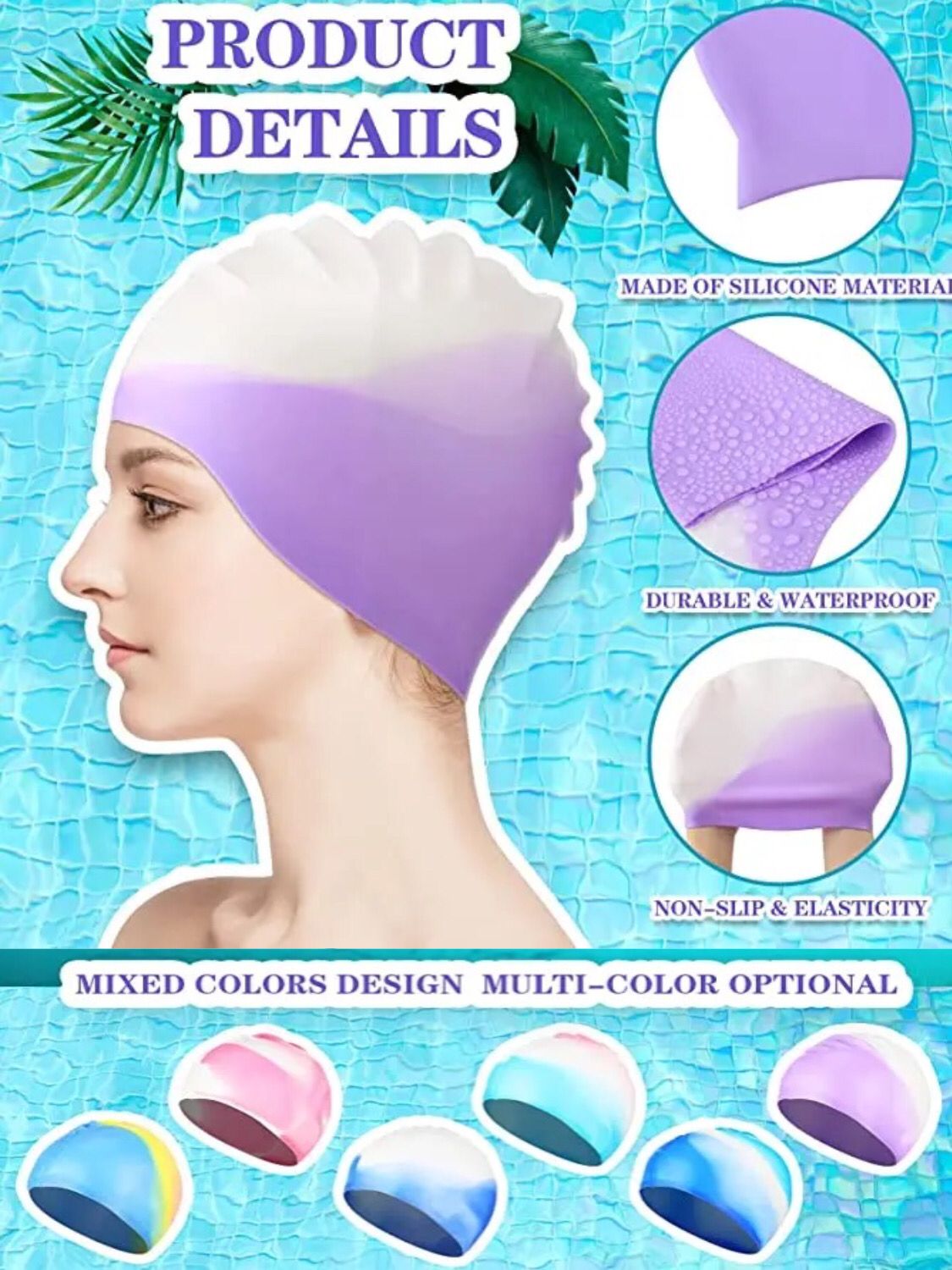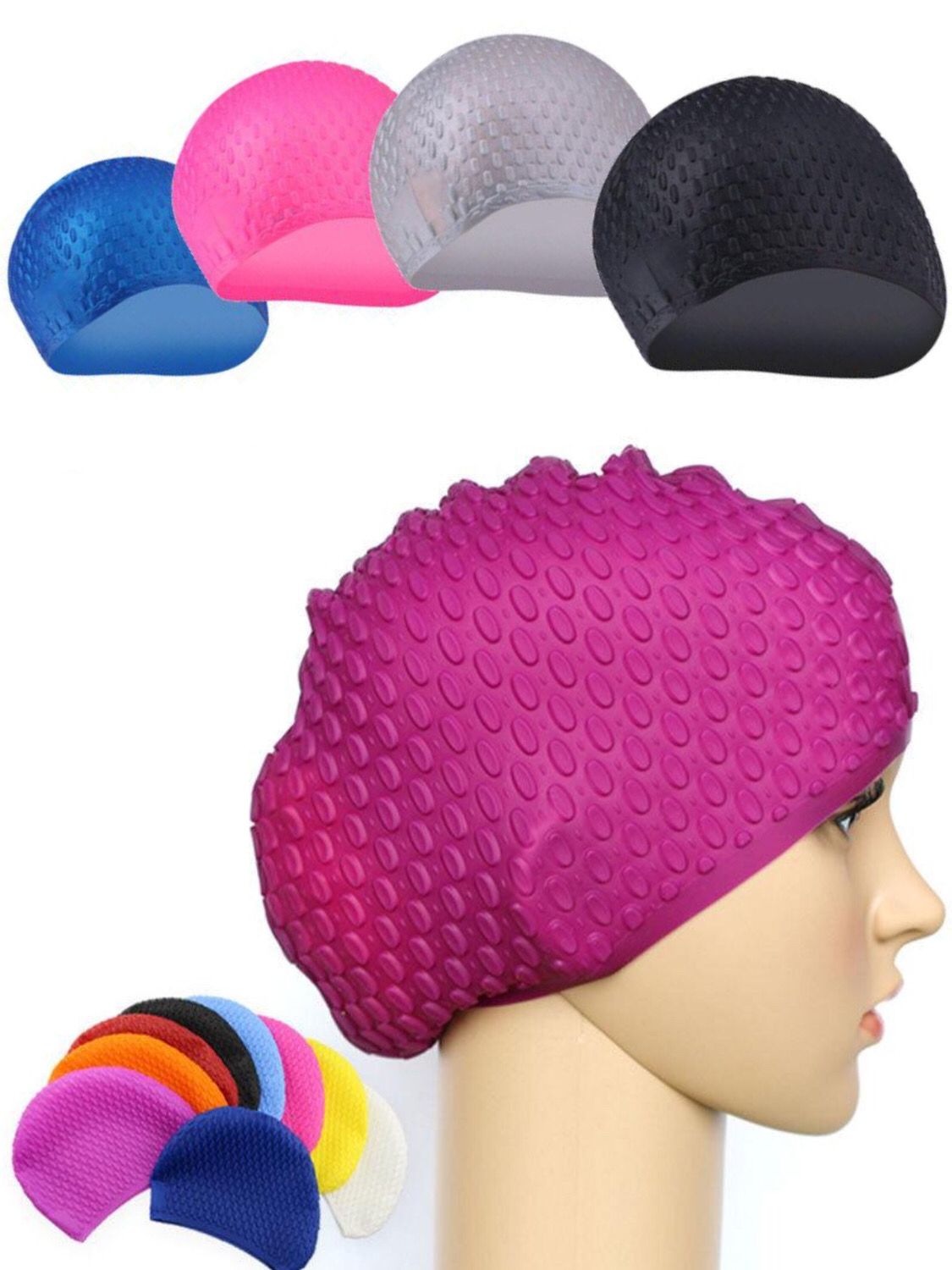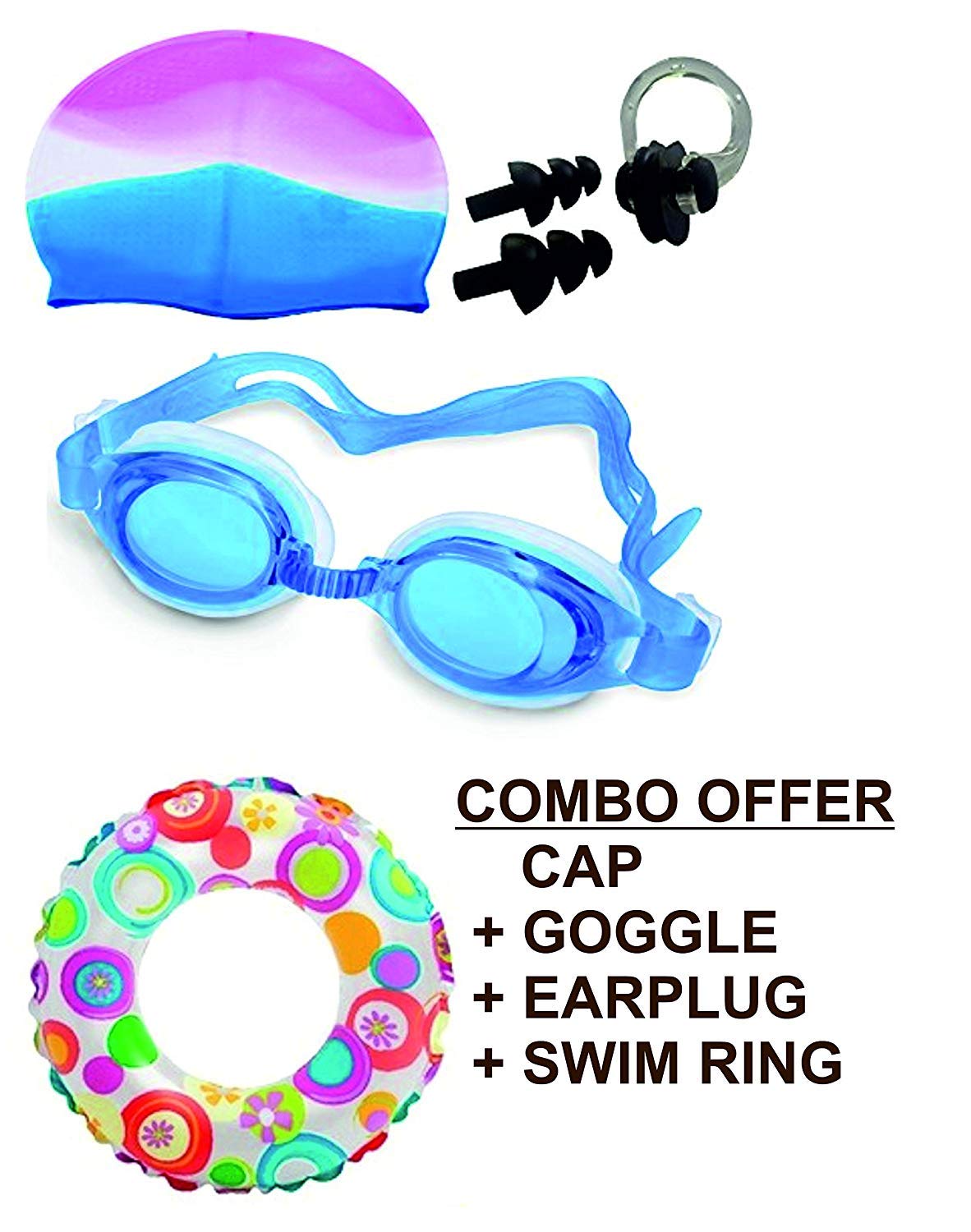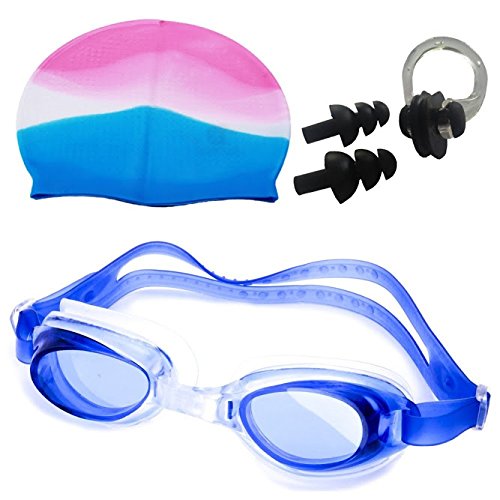BUY SWIMMING CAPS ONLINE
Shop Swim Caps for Women & Men Online In India
Swimming caps are an essential piece of equipment for any
swimmer. They provide a number of benefits, including keeping hair out of the
face and eyes, reducing drag, and preventing the absorption of chlorine and
other chemicals. In this article, we will explore the different types of
swimming caps and their uses, as well as some tips for caring for your cap.
Types of Swimming Caps:
Silicone Caps:
Silicone caps are the
most popular type of swimming cap. They are durable, comfortable to wear, and
provide a snug fit that reduces drag in the water. They also come in a variety
of colors and designs, so you can show off your personal style.Latex Caps:
Latex caps are similar to
silicone caps, but they are thinner and less durable. They are also less
expensive than silicone caps, making them a popular choice for casual swimmers.Lycra Caps:
Lycra caps are made from a
stretchy, lightweight material that is breathable and comfortable to wear. They
are a good choice for swimmers with longer hair, as they can be stretched to
accommodate larger hair volumes.Neoprene Caps:
Neoprene caps are made
from a thicker material that provides extra insulation in cold water. They are
a good choice for open water swimmers or triathletes who need to stay warm in
cooler temperatures.
Uses of Swimming Caps:
Swimming Caps Reducing Drag:
Swimming
caps are designed to fit tightly against the head, reducing drag in the water
and allowing swimmers to move more quickly through the water. Swimming Caps Protect Hair:
Swimming
caps keep hair out of the face and eyes, protecting it from the damaging
effects of chlorine and other chemicals.Identification:
In competitive swimming,
swimmers often wear caps with their team logo or other identifying marks to
help judges and spectators differentiate between swimmers. Swimming Caps Keeps Water Out:
Swimming
caps can also help keep water out of the ears, reducing the risk of infection
or irritation.
Tips for Caring for Your Swimming Cap:
- Rinse your cap in fresh water after each use to remove
chlorine and other chemicals. - Avoid exposing your cap to direct sunlight or extreme
temperatures, as this can cause it to deteriorate more quickly. - Store your cap in a cool, dry place, away from direct
sunlight and heat. - Avoid using harsh chemicals or abrasive cleaners on your
cap, as this can damage the material. - Replace your cap every 6-12 months, or when you notice signs
of wear and tear such as stretching or cracking.
In conclusion, swimming caps are an essential piece of
equipment for any swimmer, providing benefits such as reducing drag, protecting
hair, and keeping water out of the ears. By choosing the right type of cap and
taking care of it properly, swimmers can enjoy the benefits of this important
piece of equipment for many swim sessions to come.
BENEFITS OF SWIMMING CAP
Swimming caps are a common sight at any swimming pool,whether it's a competitive or recreational setting. While some people might
think that swimming caps are only worn for aesthetic reasons, there are
actually several benefits to wearing one. In this article, we'll discuss the
various benefits of wearing a swimming cap, both for competitive swimmers and
for those who swim for leisure.
Swimming Caps Reduced Resistance in the Water:
Swimming
caps are designed to be tight-fitting, which can help to reduce resistance in
the water. The streamlined shape of a swimming cap allows water to flow over
the head more smoothly, resulting in a faster, more efficient swim. This is
particularly important for competitive swimmers, who are constantly trying to
shave seconds off their times.Swimming Caps Protect from Chlorine:
Swimming
pools are treated with chlorine to keep the water clean and free from bacteria.
While chlorine is effective at killing bacteria, it can also be harsh on the
hair and scalp. Wearing a swimming cap can help to protect the hair from the
effects of chlorine. It also prevents the hair from becoming entangled in pool
drains or other pool equipment.Swimming Caps Improved Visibility:
Swimming
caps are often brightly colored, which can help swimmers to be easily seen by
lifeguards or other swimmers. This can be especially important in crowded pools
or open water swims, where visibility can be limited.Swimming Caps Reduced Water Resistance for
Swimmers with Long Hair:
Long hair can create drag in the water,
slowing down a swimmer's progress. Wearing a swimming cap can help to reduce
this resistance, making it easier for swimmers with long hair to move through
the water more quickly.Swimming Caps Protect from Cold Water:
Swimming
caps can help to keep the head warm in cold water. This is especially important
for swimmers who participate in open water swims, where the water temperature
can be quite chilly. Caps made from neoprene or other insulating materials are particularly effective at keeping the head warm.
Identification :
Swimming caps can be customized with a
swimmer's name or team logo, making it easier for coaches, judges, and other swimmers to identify them during a race or competition.Swimming Caps Ear Protection:
Swimming
caps can help to keep water out of the ears, which can help to reduce the risk
of swimmer's ear, a common condition that can cause pain and discomfort.
In conclusion, wearing a swimming cap provides several
benefits for swimmers of all levels, from reducing resistance in the water to
protecting the hair and scalp from chlorine. Whether you're a competitive
swimmer or you enjoy swimming for leisure, a swimming cap is an essential piece
of equipment that can help to improve your swimming experience.
FAQs about Swimming Cap
Here are some frequently asked questions about boys Swimming Cap:
What is a swimming cap?
Swimming cap
is a tight-fitting piece of headwear that is worn by swimmers to protect the hair and scalp, reduce water resistance, and improve visibility.Why do swimmers wear caps?
Swimmers
wear caps for a variety of reasons, including reducing water resistance,
protecting the hair and scalp, improving visibility, and providing identification during races.Are swimming caps one size fits all?
Most
swimming caps come in one size fits all, but some brands offer different sizes to accommodate different head sizes.What are swimming caps made of?
Swimming
caps can be made from a variety of materials, including silicone, latex,
neoprene, and lycra.How do I choose the right swimming cap?
When
choosing a swimming cap, consider the material, the size, and your specific
needs (e.g., protecting your hair from chlorine, improving visibility, reducing
water resistance).How do I put on a swimming cap?
To put
on a swimming cap, start by putting your hair up in a bun or ponytail (if you
have long hair). Then, hold the cap open and pull it over your head, making
sure to cover your ears.How do I take off a swimming cap?
To
take off a swimming cap, use your fingers to gently peel it off your head,
starting at the back and working your way forward.How do I care for my swimming cap?
To
care for your swimming cap, rinse it with clean water after each use and allow
it to air dry. Avoid exposing it to excessive heat or direct sunlight.How often should I replace my swimming cap?
Swimming
caps can last for several months to a year, depending on the material and
frequency of use. Replace your cap when it starts to show signs of wear and
tear or loses its elasticity.Can swimming caps cause hair loss?
Swimming
caps do not typically cause hair loss, but they can cause breakage or damage to
the hair if they are too tight or not put on properly.Can swimming caps prevent swimmer's ear?
Swimming
caps can help to prevent swimmer's ear by keeping water out of the ears.
However, it is still important to dry the ears thoroughly after swimming to
prevent infection.Can I wear a swimming cap if I have a lot of hair?
Yes, swimming caps can accommodate all types of hair, including long,
thick, or curly hair.Can I wear a swimming cap if I have a sensitive
scalp?
Yes, swimming caps are generally safe for people with
sensitive scalps, but it is important to choose a cap made from a soft,
non-irritating material.Can I wear a swimming cap if I have dreadlocks or braids?
Yes, swimming caps can be worn over dreadlocks or braids,
but it may be more comfortable to choose a cap made from a stretchy material
like lycra.Can I wear a swimming cap in open water?
Yes,swimming caps can be worn in open water to protect the head from cold water and
to improve visibility.Can I wear a swimming cap in a hot tub?
Yes,
swimming caps can be worn in a hot tub, but it is important to choose a cap
made from a material that can withstand high temperatures.Can I wear a swimming cap with goggles?
Yes,
swimming caps can be worn with goggles to improve visibility and reduce water
resistance.Can I wear a swimming cap with ear plugs?
Yes,
swimming caps can be worn with ear plugs to further protect the ears from
water.
Also Check: Swimming Ear Nose Protection | Swimwear | Swimming Goggles
Lets Treat Yor'self. Happy Poftik Shopping.




